Choose the Right Nursery Color Using Color Psychology

Choosing a nursery color for a baby can be complicated. Hoping to escape the usual pink or blue options, many parents jump into the world of color by skipping color into prayer. Color selection isn’t a science, is it?
Indeed it is. Just ask the army of marketing writers who have spent millions on research.
Psychological studies conducted by advertising agencies suggest that colors can affect mood and behavior, stimulate the brain and body, and even affect your child’s health. Marketing professionals have used these features to their advantage for decades. Your gym decor, day spa, and even your favorite burger joint are specially designed to affect everything from your mood to your appetite. But the psychology of color can be used to impress more than just your wallet. Scientific studies have also shown that exposure to certain colors can improve sleeping habits, improve memory, and improve academic performance. Great Benefits for Body and Mind Growth –
Whether you’re planning a kindergarten or an urgent upgrade to your teen’s house, your design can benefit from psychological intervention. You should take a minute to consider the emotional impact of your color choices before opening this can of paint.
Color Psychology 101
Different colors can have different effects on the mind and body. Wondering what your favorite color can do for you? Here is a brief breakdown of the potential pros and cons of each color family.
Warm colours

In general, warm colors express happiness and comfort, while large, open spaces create intimacy and a sense of comfort. Strong red, orange, and yellow tones can stimulate the mind and have a powerful effect on the body. While it’s beneficial for growth and development, it doesn’t benefit too much from nightly showdowns with average, particularly enthusiastic kids. Therefore, warm colors are best used in moderation.
Instead of painting the entire room red or light yellow, draw a single accent wall and include a few matching accessories. You may want to combine warm colors with cool hues to create balance and mitigate negative effects.
Red
Rich and very emotional, red stimulates and energizes the body, increasing heart rate, blood pressure and shortness of breath.
Do you have a little athlete on hand? Some studies suggest that the physical effects associated with color increase athletic ability. However, red has been linked to increased aggression, inability to concentrate, and even headaches. Some research suggests that exposure to the color red may even affect your child’s school performance.
Pink
Pink is loved in public by little girls, it encourages empathy and femininity, and creates a calm atmosphere. Despite its initial calming effects, pink can become irritating over time, leading to movement and anxiety. Although your princess likes this pink color now, you should be ready to say no to it in the future.
Yellow
Bright and cheerful, yellow is associated with happiness and inspiration. Soft, delicate yellow stimulates concentration, while light shades can stimulate memory and boost your metabolism. However, too much yellow can lead to anger and frustration due to overly excited children.
Range
Kamala is friendly and welcoming and borrows many positive traits from her parents. Orange has a strong social character, inspires interpersonal communication and gives people comfort. Like turmeric, too much orange can be more or less irritating. So use a slightly less intense shade.
Cold colors
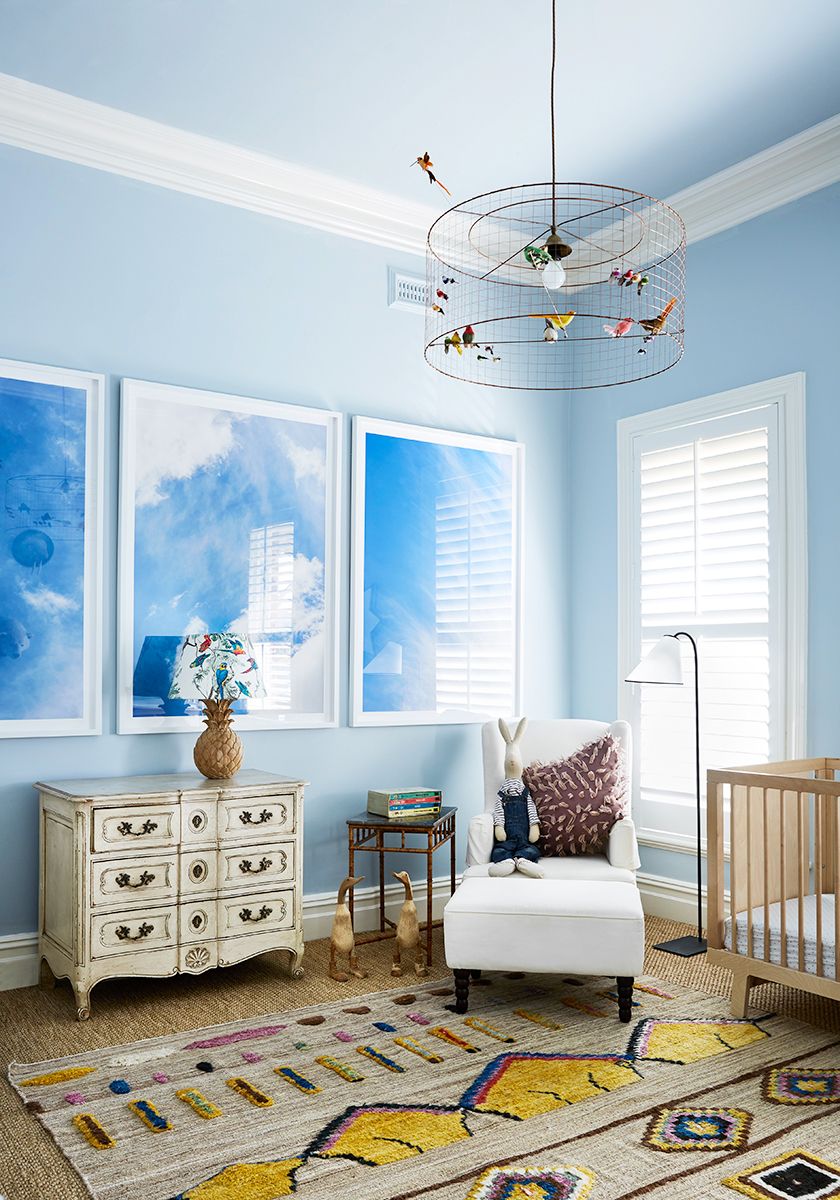
Cool colors have a calming effect on the body and make your child’s room feel spacious and comfortable – think of open skies and rolling waves. However, dark, cooler colors can bring out all of the shadows and darkness of an impending storm and should be used as restraint.
Despite their fascinating nature, cool colors aren’t particularly inviting and people can feel cool and protected when the surroundings are cool. To soften the effect, combine cool colors with creamy neutrals and decorate your room with soft fabrics and comfortable accessories.
Blue
The color wheel is the exact opposite of red, the blue calms the body and mind, lowers blood pressure, reduces heart rate and shortness of breath, as well as the feeling of fear and aggression. Children who have difficulty sleeping or who are at risk for systemic and other behavioral problems can benefit from spending time in a blue environment. The blue physical effects also cool the body, creating a fresh oasis in a warm, humid place.
Purple
Associated with wisdom and spirituality, depending on the purple that combines the durability of blue and the energy of red, each purple can also have a luxurious feel and it is associated with wealth and royalty.
Green
Green symbolizes nature and thus promotes a calm and peaceful environment. In connection with health, healing and well-being, green has a calming effect on body and mind, reduces anxiety and promotes concentration. Exposure to green can even improve reading skills. One study found that students can improve their reading speed and awareness by placing the transparent green sheet over the text.
Trust your instincts
While science can make useful generalizations, it should be remembered that emotional responses are deeply personal. You may feel different about colors based on your own culture and preferences. It’s great if your child likes red. Don’t worry about the negatives. The brain is supposed to know what it needs and what it likes, and it will reward us for following instructions. In other words, if your child is happy, their brain is happy too.
Color Psychology For Baby Rooms
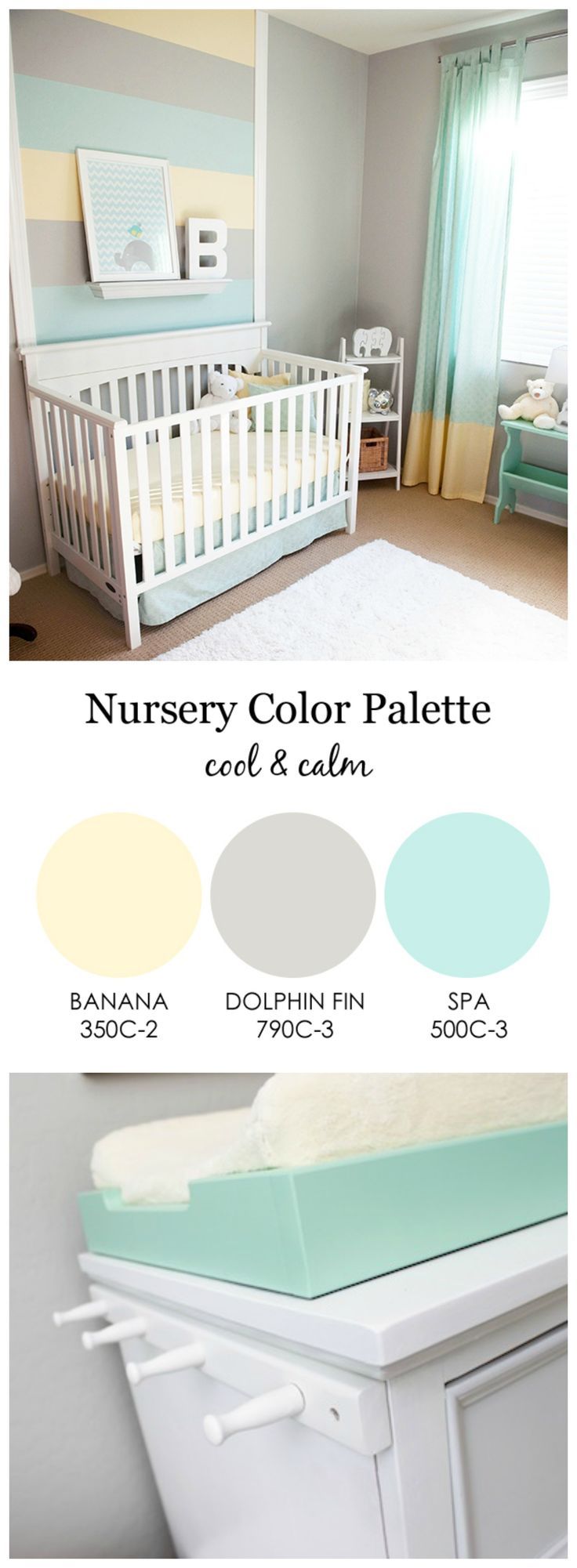
Choosing the right color for your baby’s bedroom can be a daunting task, especially when there are so many baby room ideas out there.
Pastel colors have been used as the most recommended option for creating nice spaces for children, offering soft colors for calming. However, modern interior design offers numerous new trends that arise from conventional themes, especially for baby rooms.
Kindergartens that are interesting and stimulating for the baby do not have to be neutral. In fact, it is possible to customize the design of the rest of your home without overwhelming it with something bold.
Baby room color psychology psychology is very reliable and effective these days as it is said that the color of the environment has a significant effect on the baby’s body and mental development.
Obviously, every parent wants the best for their child, about these effects and how they affect the child’s growth and behavior can determine the right decision for the color of the children’s room.
Warm it up
The fact that warm colors correspond to the same feeling is well known. Strong red, orange and yellow tones make for a cozy and intimate experience. Eliminating the pleasant and pleasant feelings that you can feel energizes the mind and makes the body fresher and more active.
This complex combination of color and feel can be the downside of baby room color, especially at night when babies are hyperactive and those bold colors don’t do much to calm them down. So it is best to use them with them.
One of the most interesting ideas for children’s homes is to paint a single wall with a warm accent and decorate it the same color or create a contrast between warm and cool colors. The color of the crested goat house creates a balance by reducing the balance and negative energy.
A bright and happy orange
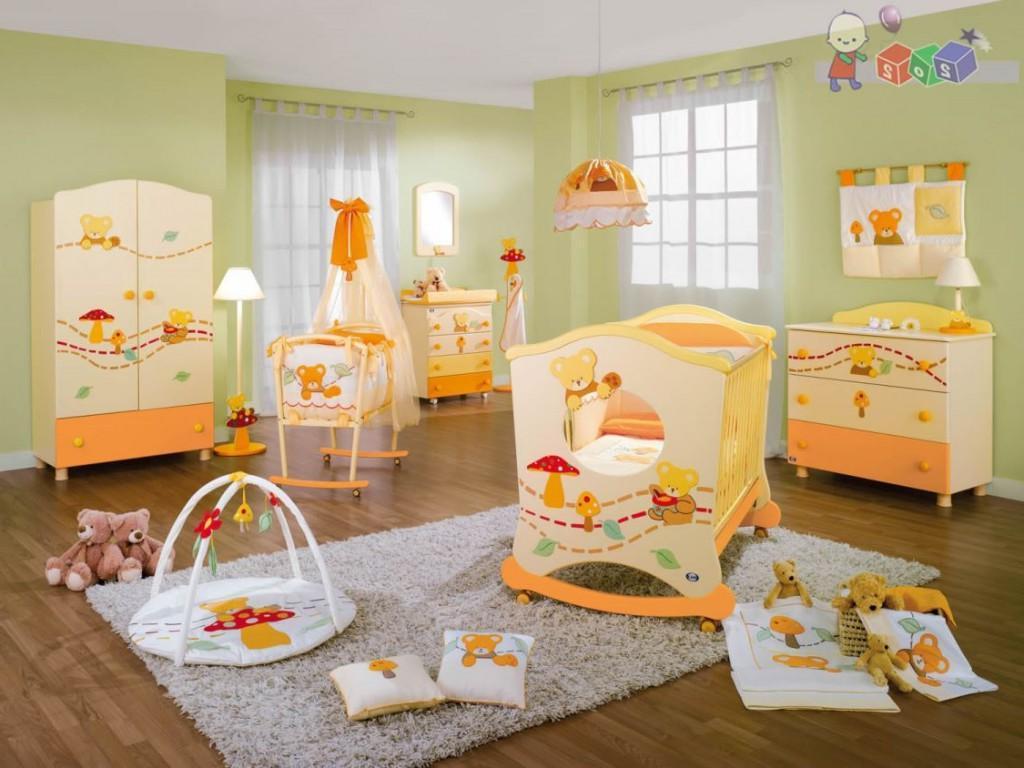
A warm and provocative shade of orange embodies better social interaction and increases the desire to communicate and interact with the environment.
Despite its positive effects, an excessive amount of orange is especially strong when it is colored, and the idea of a boys and girls house in particular can add strength to the house. Usually there should be enough light to overcome the irresistible feeling associated with this color.
Red for burning fuel injuries
The color of arousal invigorates the body and delights the mind with its bold appearance. Breathing rate and heart rate increase under the influence of a red environment.
Too much time is spent in this environment, especially in baby rooms where aggression or concentration levels can be reduced.
While a red accent will add some energy to the room, it wouldn’t be wise to use this color in addition if you’re talking to a very active child. Overall, this is at least the concept of a child’s room.
Blue healing power
According to psychologists, shades of blue, especially in kindergartens for babies, can make you feel blue if you don’t choose the right shade. Gray blue tends to do this, as opposed to warm, bright blue, which relieves stress and increases productivity.
Also, this color is not recommended for children who have trouble eating to reduce appetite. Since it’s a cool color, it can also be helpful for children who are uncomfortably warm. When the right decor is chosen, it can inspire some lovely home decor.
Pink for a feminine mood
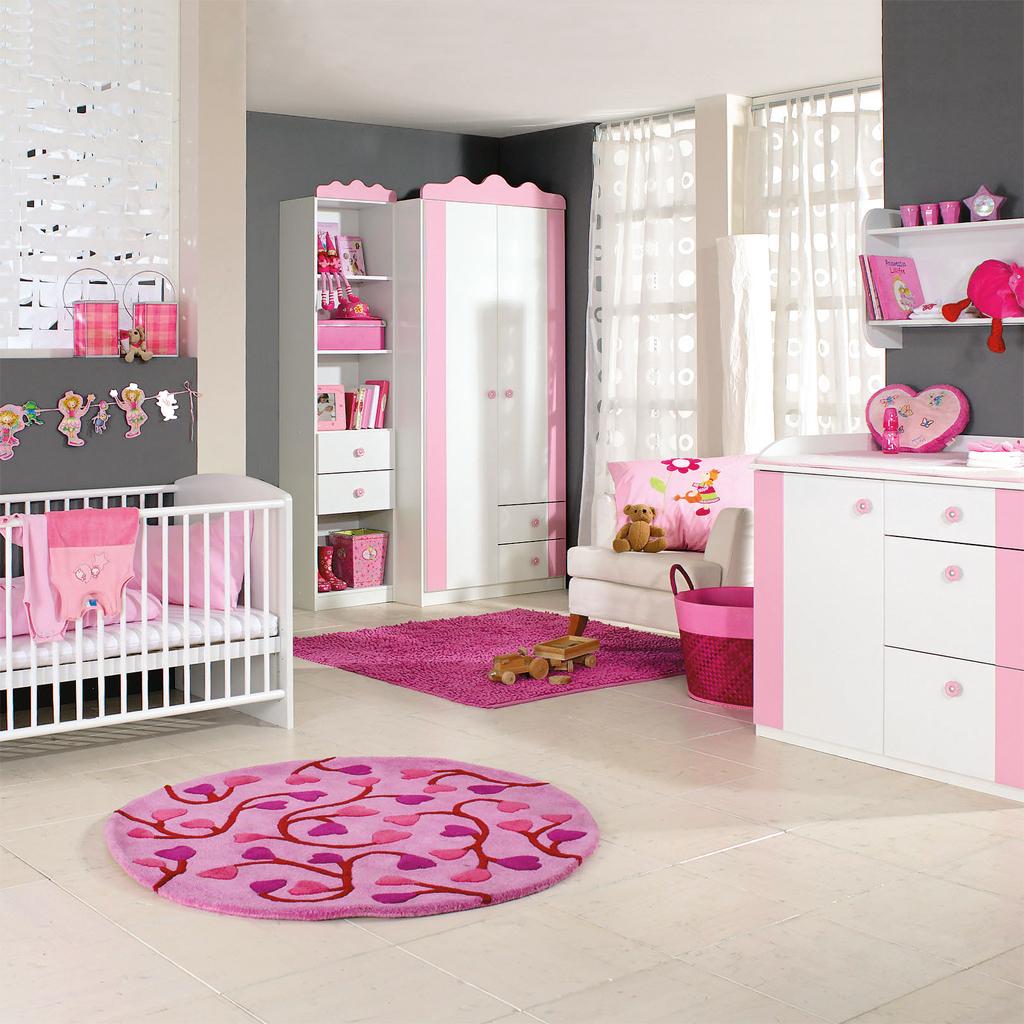
Childrens bedroom color psychology states that while pink is often associated with a little girl’s bedroom, it is great for a little boy’s room.
Behavioral researchers have observed the activity of children incarcerated in the San Bernardino County Parole Department, California, and have seen their violent attitudes fall into the silent response to a custom-made 8-jute in a 4-foot by pink room. So this color choice is perfect as a kindergarten theme for children.
The color itself gives a calmer and more sensitive feeling. Even a boy’s nursery can accommodate these shimmering colors that can be paired with a subtle shading decor. Remember, anxiety is a common result of overuse of this color. Therefore, use them only moderately as an idea for children’s room colors.
Yellow
It’s bright, it’s happy – after all, it’s the color of the sun. Yellow can bring light to any place for nursery ideas, but if you use a very bold color, you may find your baby crying more. This is a big reason not to include it in your favorite kids room colors.
It happened because when surrounded by yellow, intellectual activity and muscle speed increase. Hence, the paint should be used minimally as an add-on or simply for decorative purposes. A soft yellow is cooler and likely a lighter choice. In rooms for little people, you prefer to play with a neutral baby color.
Alone
The dormant aqua color lowers blood pressure, brightens the body and purifies the mind. Its light ingredients are slow and peaceful, but they can slow a baby’s development significantly. However, a modern kindergarten concept still has to be taken into account
Cold colors
These colors to make the room spacious make the whole scene quieter and more cozy. The body and mind are stimulated in soft tones with cool colors and it works for children’s rooms too.
Of course, these colors come with a list of precautions – if too sharp, they can leave you feeling cool, unconventional for longer.
If you want to soften the vibe, creamy neutrals and soft fabrics are a good pair. Regardless of the child’s gender, neutral colors are always recommended for children.
Brown
Brown is a natural, earthy color and when used correctly, either dark brown or beige, creates a warm and grounded atmosphere in the room. Associating with harmful graphics can be a problem if not properly addressed, making it easy to add this color to the list of ideas for unisex nursery schools.
Gray
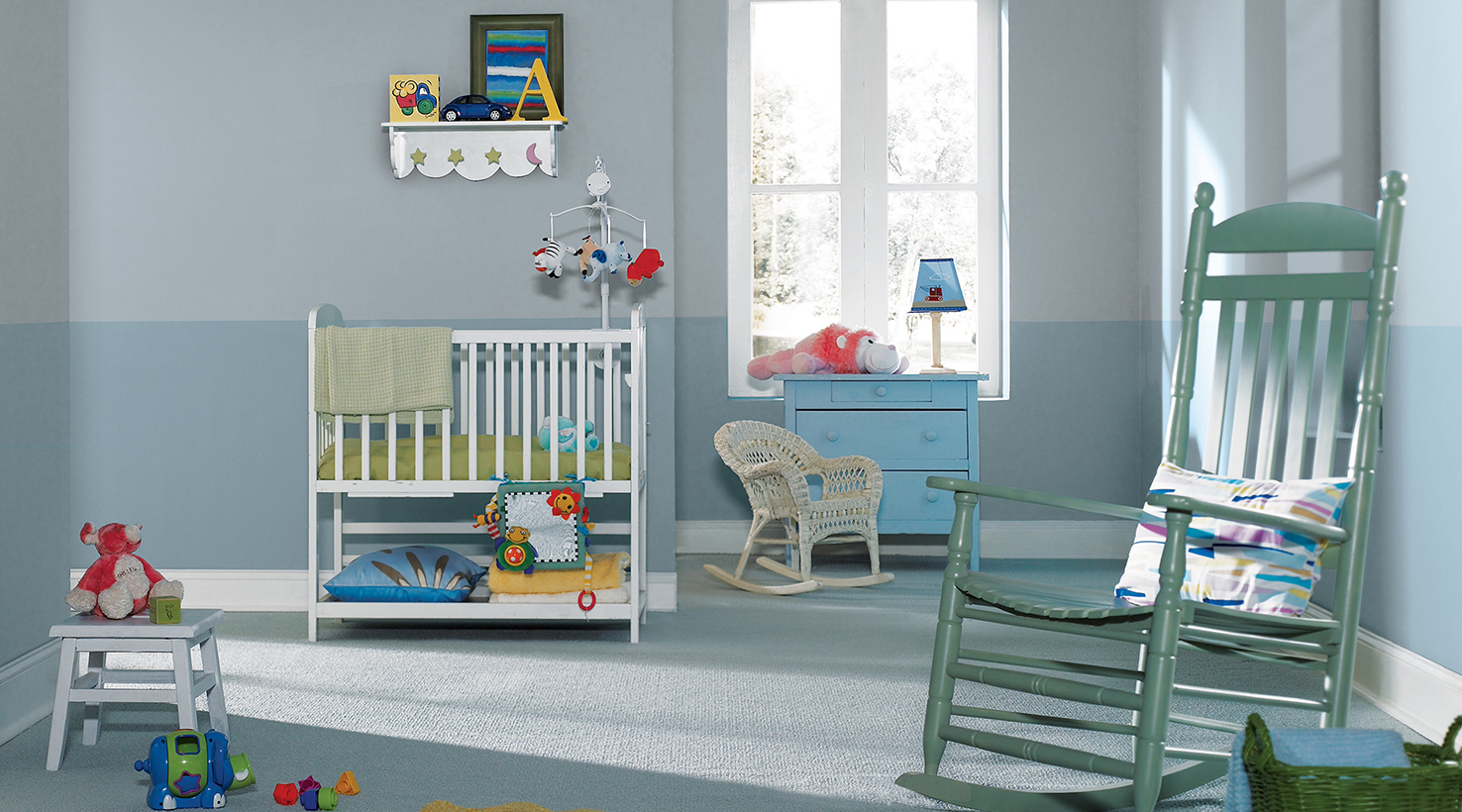
Neutral melodies stimulate thought and stimulate emotions. They go well with bold accents and intricate decor. So don’t hesitate to use this down-to-earth shade when choosing the color for your kid’s room.
Green
Green symbolizes nature and thus promotes a calm and peaceful environment. In connection with health, healing and well-being, green has a calming effect on body and mind, reduces anxiety and promotes concentration.
Exposure to green can even improve reading skills. According to a study, students improved their reading speed and understanding by placing the transparent green sheet at the top of the text. Hence, you have plenty of reasons to consider this in kindergarten color schemes.
Purple – dignified, mysterious, luxurious
Purple has long been associated with royalties and is still available today. Jewel tone purple gets as regular as it gets. Pastel purples like lavender and lilac are more serene and sophisticated, but still feel luxurious. Purple is rare in nature, so it is the most “unnatural” color and is not one of the great kindergarten ideas that are included in the selection of children’s walls.
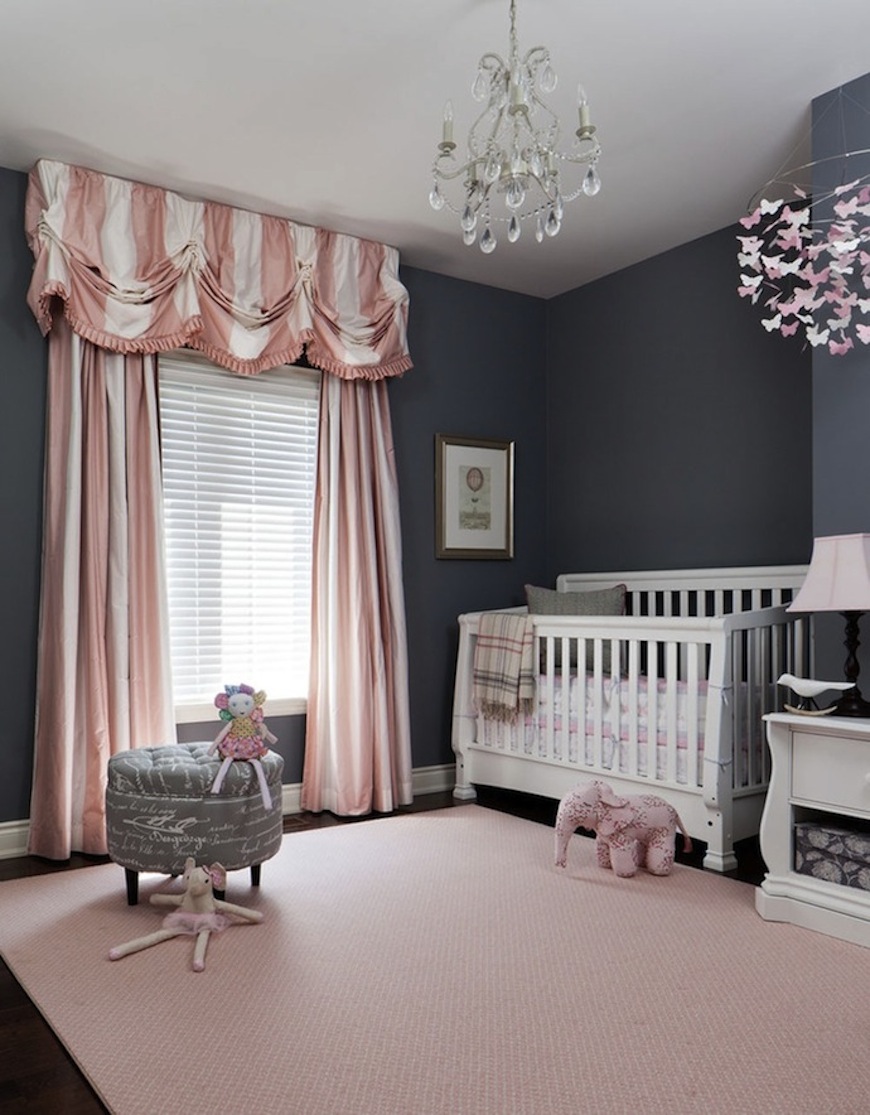
The science behind the interrelationship between color and human behavior is not precise or significant. However, there are some color cues when designing the bedroom for young children and decorating the nursery in general. Studies have shown that children in adults prefer purple over other colors.
Even the most commonly used cooler blues and delicate pink trumpets purple instantly grab their attention and keep them interested for a long time. Also easy on the eyes. Luxurious, sophisticated, and stylish, purple is probably the perfect choice for a gender-neutral nursery and one of the most popular baby colors.
White
It brings hope, strength and the power of transformation. Beneficial effects of and attached children; Your self-assessment increases. It is best used in combination with other colors. If you are looking for small kindergarten ideas, this color creates the impression of a larger space and therefore completely changes the perspective.
Black
Nurseries rarely have black features, and using this color is not an inspiring nursery decor concept. This is because it is a color that should always be used with caution. It’s strong and dark. So use it when the room has a large window, lots of natural light, and a combination of opposite hues.
Finally
While science can make useful generalizations, remember that psychological responses and perceptions are deeply personal and thematic. You can feel the color differently depending on your culture and personal preference and it’s great.
If your little boy likes red, don’t worry about the ill effects. Baby room ideas can be as diverse as the personality of children in general. The brain is supposed to know what it needs and what it likes, and will reward us for the downsides. In other words, if your child is happy, their brain is happy too.
